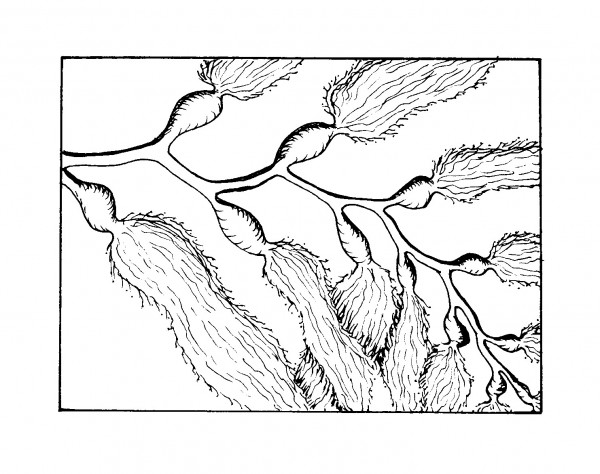Don’t Wreck the Wrack

Until the 1960s, thick kelp forests grew along the Southern California coast with the largest kelp bed in Orange County just off Main Beach. Over the ensuing years, normal El Niño / La Niña cycles and storms ravaged the kelp. With the cumulative impact of pollution, run-off, sedimentation, over-harvesting and climate change, it is estimated that ultimately 90 percent of the kelp in Orange County was decimated. Furthering the stress within the ecosystem was an upset in the predator / prey balance with the resultant explosion of sea urchin populations. The sea urchin, whose diet consists mainly of kelp, thrived unchecked without their natural predators, the historically abundant sea otters, the California spiny lobster and the California sheephead fish.
Due to the successful efforts initiated by the California Coastkeeper Alliance, which in 2001 started restoring the giant kelp (Macrocystis pyrifera), the kelp beds have been growing back to historic levels. A healthy kelp forest is not only important to a healthy ocean ecosystem, but softens the wave action against the shore. But as the kelp grows, heavy surge and waves break off large and small pieces of kelp and at times, even rip entire plants, including the holdfast (root system that attaches it to the rocks), from the seafloor. This is an important mechanism that allows light to reach deep inside the kelp beds to allow additional growth and to produce a healthier forest.

The mass of kelp, called kelp rafts, float along the surface of the water and are carried by winds, currents and surf. Most travel only a short distance, but at times genetic testing has shown that some kelp rafts can travel hundreds or even thousands of miles. As they drift much like a floating island, they provide food, habitat and protection from predation for a large variety of marine life including fish, seastars, anemones, crustaceans, barnacles and other invertebrates. Swimming around kelp rafts, one often sees small fish and shrimp swimming within the shadow of the debris. Recently, almost the entire Laguna seastar population died due to last spring’s wasting epidemic. As an example of their important role, locals are starting to see baby seastars returning to the area attached to kelp rafts. So not only do rafts become an important mechanism of genetic dispersal, they are also critical for species preservation and expansion of geographic ranges.
If a kelp raft floats for too long a time, it will lose its buoyancy and descend to the seafloor where it will nourish other marine life such as sea urchins, marine gastropods, mussels and other filter feeders. When washed ashore, the organic debris, now called kelp wrack, become the basis of another intricate food web in a different ecosystem. As wrack land on the beach, it is colonized by a diverse variety of animals including kelp flies, beach hoppers, red mites, kelp beetles, crustaceans and worms. It is estimated that 40% of beach animals depend on rotting and decaying wrack as a food source, as a warm spot to lay their eggs, as protection from predators and as shelter from the drying sun. In turn, these animals become an important food source for local and migratory shorebirds, terrestrial birds and other inland predators.
In addition, kelp wracks directly help reduce beach erosion by trapping windblown sand, which helps stabilize the sand. Moreover, wracks act as an anchor for hummocks and sand dunes, which ultimately may be instrumental in protecting the coast from flooding. Decomposing kelp wrack also returns nutrients to the ocean used by marine plant and animal life. California Fish and Wildlife officials require that some kelp be left on the sand beaches because Laguna Beach is a protected marine reserve.
Year-round ocean swimmers Mia Davidson and artist Jan Sattler remind visitors the law prohibits collecting of marine animal or plant life in intertidal area.




